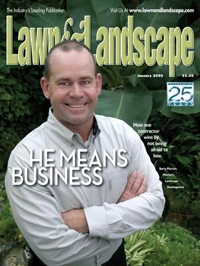To meet the challenge of finding and retaining strong employees at Denver, Colo.-based Swingle Tree & Lawn Care, we’ve created a standardized interview and hiring process that helps us identify "A" players among stacks of job applications. At Swingle, our busiest hiring period is usually during the spring growing season, though we do hire year-round. Management or customer service positions may open at any time of year, so having a structured interview process helps us tackle all hiring situations with the same efficiency.
We begin by advertising open positions in newspapers, at career fairs or as a part of our employee referral program. A range of resumes will come in depending on the position. We may receive 10 applications for a technician position or 60 or more for management positions. Recently, we received nearly 225 resumes through an Internet job site for two customer service openings.
To efficiently and objectively qualify potential candidates, we evaluate each application for a supervisory-level position or above using our Resume Scoring Form. Here, we outline minimum qualifications for the position based on the appropriate job description. For an administrative position, for example, the Resume Scoring Form lists skill sets including industry experience, communication and computer skills, problem-solving ability, etc.
Generally, candidates are scored on a scale of one to 15 for skill sets such as management experience, while other qualifications are graded more concretely. We may give a candidate 10 points for possessing solid word-processing skills or zero points if they haven’t developed these abilities. Additionally, if a candidate fails to address items we specifically mentioned in our advertisement, such as including an example of how they motivated employees at a previous job, this will translate into a lower score than for someone who has the skill set and responded accordingly.
| 5 KEYS TO EFFECTIVE HIRING |
|
1. Advertise open positions in newspapers, at career fairs and with employees to attract a wide range of candidates. 2. Create an objective resume-ranking system to identify qualified candidates based on skills. Use existing job descriptions to outline desired skills for open positions. 3. Score each resume or application based on this ranking system. Use point ranges or "all or nothing" scoring scales when appropriate. 4. Standardize the interview process to eliminate backtracking. All management staff members who will interview candidates should know which questions were asked earlier in the process. 5. Call back candidates with the highest resume rankings for interviews. Use this opportunity to weigh candidates’ personalities against the skills outlined in their resumes. |
Our resume ranking system has resulted in hiring more qualified applicants and also has forced us to look more carefully at every application we receive. Some applicants may have great skills to provide an employer, but lack the presentation in the form of a resume. If we look more closely at the content of the resume, rather than just the presentation, we may find someone who would normally be overlooked. Also, we can easily identify candidates who are "fishing for a job" by sending out resumes without reading the requirements. Finally, the Resume Scoring Form provides great documentation as to why a candidate receives a callback or not.
Following the resume ranking, our application and interview process begins. Technicians may meet face-to-face with our human resources specialist, as well one or two potential supervisors. For supervisory positions, potential employees meet with the HR director, department manager, operations manager and company president, if necessary. In combination with resume ranking, face-to-face interviews give us the opportunity to learn more about each candidate’s personality, professionalism and enthusiasm for the position.
To streamline the interview phase, each Swingle manager involved in the process knows who potential employees already met with and which questions were asked. This eliminates wasted interview time and helps us identify the best candidates in a timely fashion.
While we may occasionally have the urge to fill an open position as quickly as possible, at Swingle, we’d prefer to leave a position open until we find an ideal candidate or "A" player. While this may leave us temporarily short-staffed, it results in more qualified employees, reduced turnover and increased efficiencies in the long run.
The author is HR generalist for Swingle Tree & Lawn Care, Denver, Colo., and can be reached at 303/337-6200.

Explore the January 2005 Issue
Check out more from this issue and find your next story to read.





